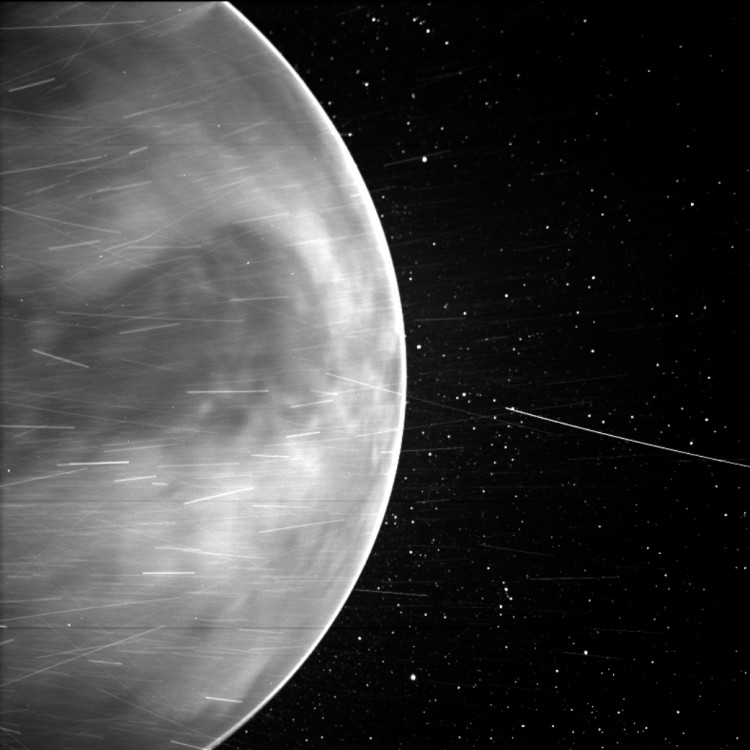The red-hot glow of Venus's surface shining through its cloak of poisonous clouds has been seen in new images captured by NASA's solar probe- a discovery that could help us better comprehend the minerals that make up this rugged and intriguing planet.
NASA scientists and others associated with the Parker Solar Probe project explain how they were able to capture such remarkable glimpses of Venus - and what these stolen glances indicate - in a paper published Wednesday.
"Venus is the third brightest thing in the sky, but until recently we have not had much information on what the surface looked like because our view of it is blocked by a thick atmosphere," Brian Wood in said a statement. Wood is the lead author on the new study and physicist at the Naval Research Laboratory in Washington, D.C.
"Now, we finally are seeing the surface in visible wavelengths for the first time from space."
Scientists were able to peek beneath the planet's thick atmosphere using data from the Wide-field Imager for Parker Solar Probe (WISPR) instrument, identifying geological features such as hills, plateaus, and plains.
Despite its proximity to Earth, Venus has proven to be a tough planet to study. It is known as Earth's "evil twin" because, despite being identical in size, mass, structure, and composition to Earth, it is extremely inhospitable to life.
Venus is arid and perhaps volcanic, with surface temperatures of 471 degrees Celsius (880 degrees Fahrenheit), while Earth is temperate and rainy.
The sky above Venus is filled with heavy, poisonous clouds that pour sulfuric acid. These characteristics make it impossible to explore the planet in detail. Landers have been dispatched, but they tend to dissolve. And the suffocating clouds make external observations on the surface difficult, if not impossible.
This is where WISPR surprised scientists. It acquired some images of Venus's night side last year that appeared to show surface characteristics through the cloud layers.
The images show a diversified landscape, including highlands and lowlands, continental masses, and other intriguing geological features ideal for research. The analysis also confirms that Venus's surface temperature is 735 Kelvin - 863.33 Fahrenheit. Surprisingly, the scientists also report emissions similar to an Earthly marvel: the aurora.
The discovery of a new way to view Venus's surface is not only a historic moment for space science, but it also provides scientists with critical information about our sister planet. These findings will aid future science missions to Venus, as well as our understanding of the planet's past. There's a theory that Venus was once an Earth-like planet, a dreadful example of a planet that was previously habitable but is now suffocated by its own greenhouse gas effect.
The research has been published in Geophysical Research Letters.






